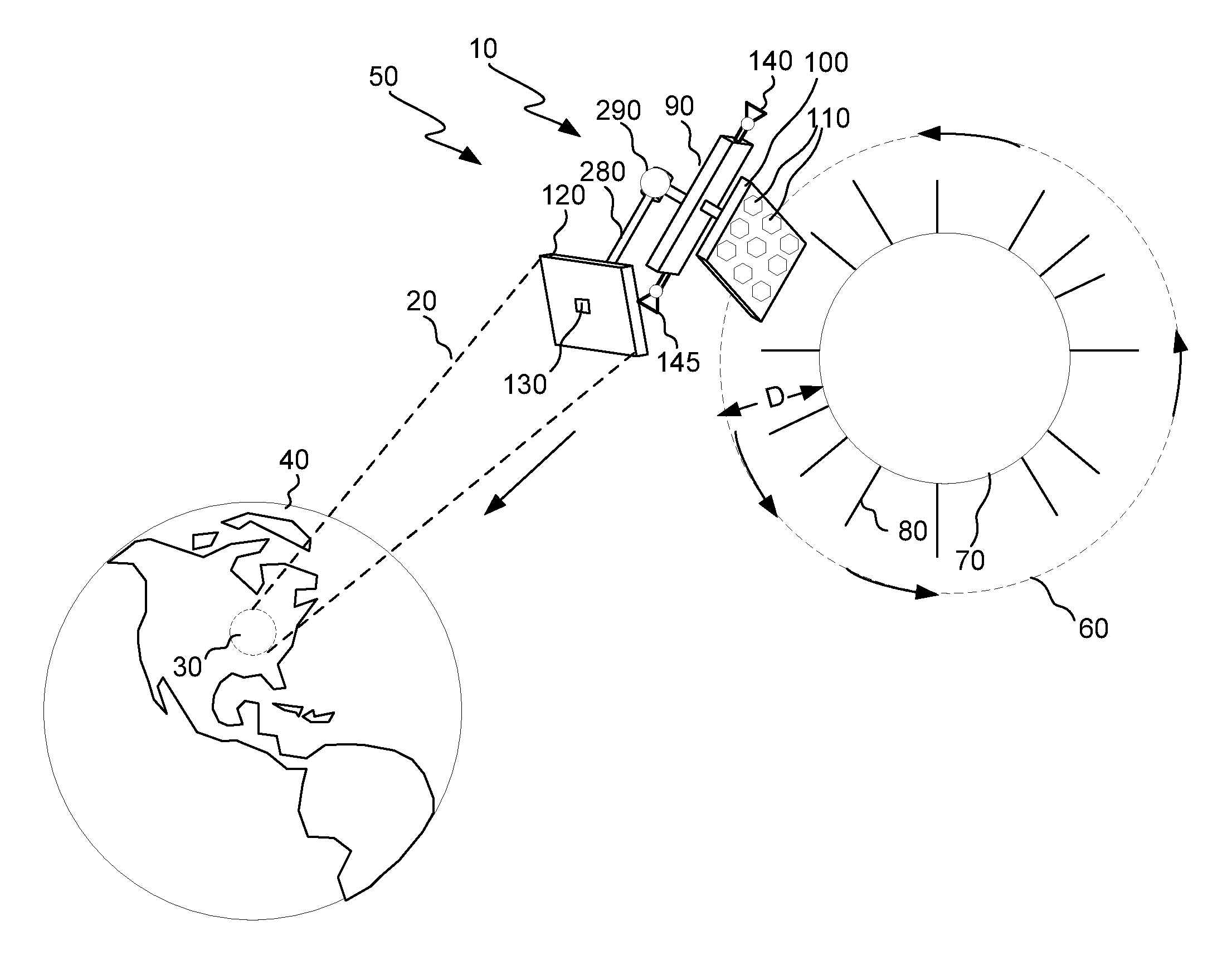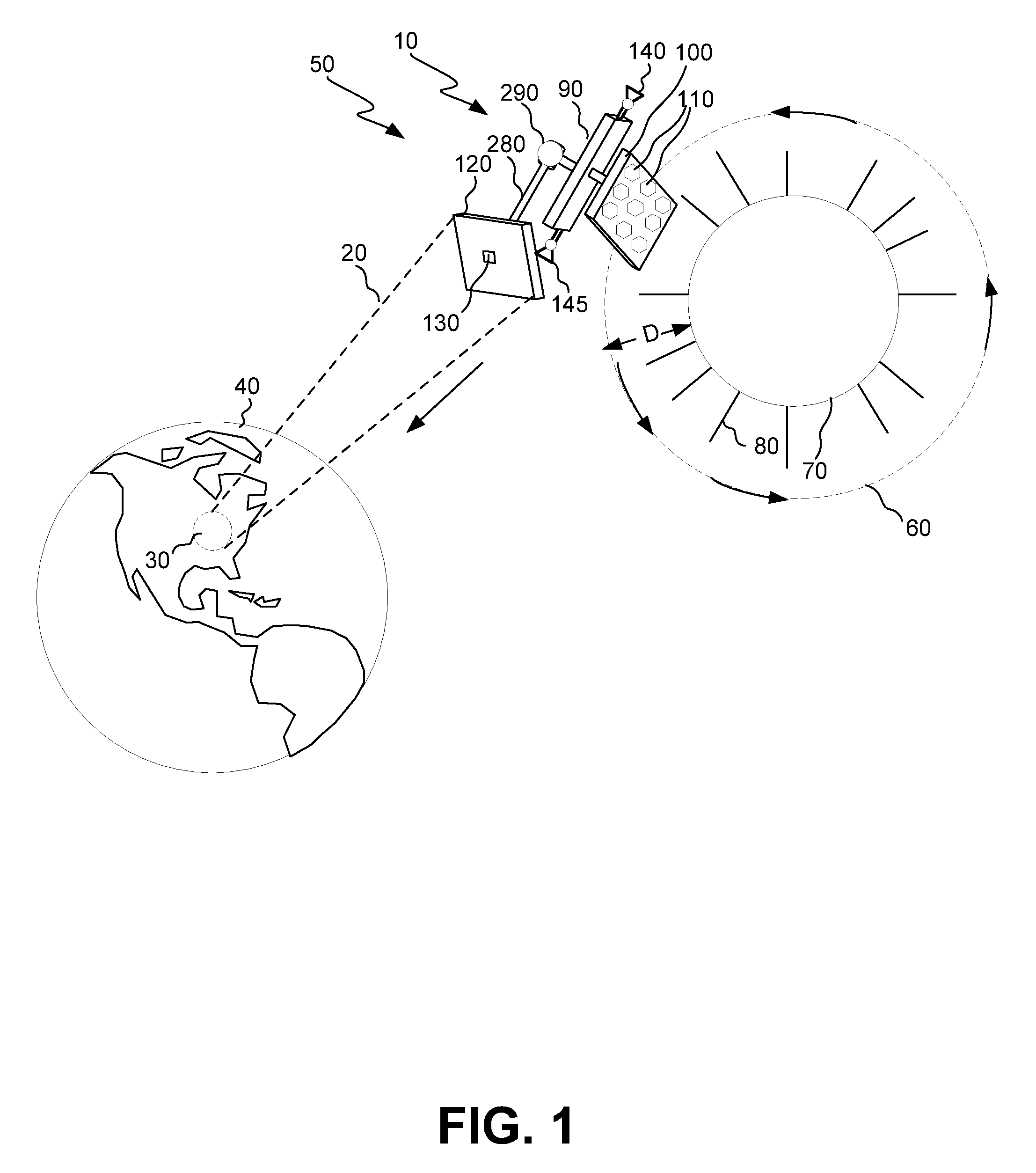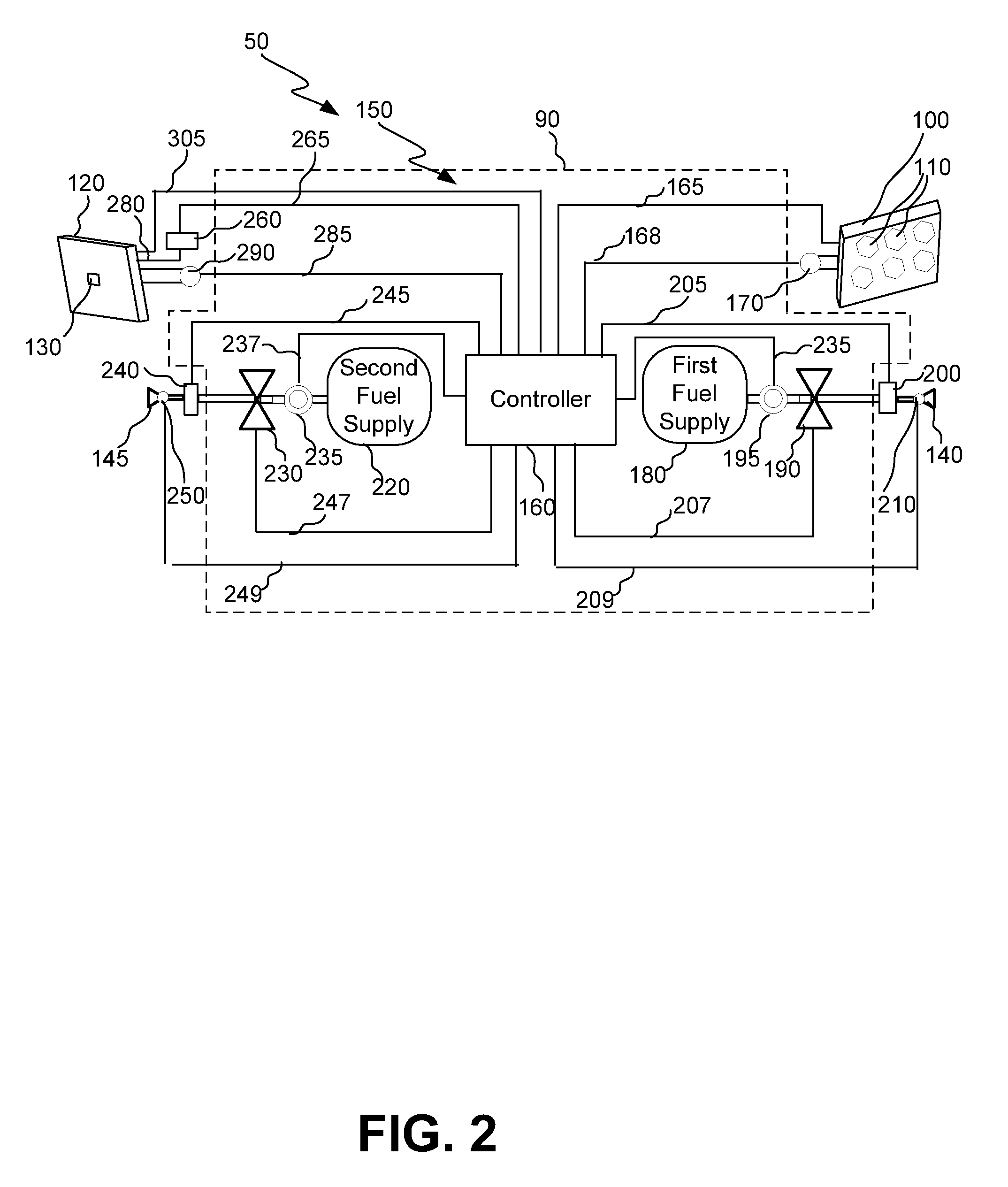Solar power satellite system for transmitting microwave energy to the earth and method of arranging a solar power satellite system about the sun for same
a satellite system and microwave energy technology, applied in the field of solar power satellite systems, can solve the problems of increasing the number and increasing the cost of solar photovoltaic cells
- Summary
- Abstract
- Description
- Claims
- Application Information
AI Technical Summary
Benefits of technology
Problems solved by technology
Method used
Image
Examples
third embodiment
[0052]As best seen in FIG. 6, there is shown a third embodiment solar power satellite system, generally referred to as 410, for reflecting microwave energy 20 to rectenna 320 disposed at a predetermined location (not shown) on a nighttime side 415 of the earth 40.
[0053]The terminology “on the nighttime side 415 of the earth 40” is defined herein to mean a side of the earth 40 not facing the sun 70. More specifically, a plurality of reflector units 370 are arranged relative to the earth 40, so that at least one of the plurality of reflector units 370 is deployed to reflect microwave energy 20 to rectenna 320 that may be disposed at the predetermined location on the nighttime side 415 of the earth 40. Microwave energy 20 is beamed from microwave transmission antenna 120 that belongs to space-based power generation unit 50 to a selected one of the plurality of reflector units 370, which then reflects the microwave energy 20 to another one of the plurality of the reflectors 370 that is ...
first embodiment
[0061]Therefore, referring to FIG. 12, there is shown a cooling subsystem, generally referred to as 660. As described in detail presently, cooling subsystem 660 is adapted to cool space-based power generation unit 50, while simultaneously generating additional electricity. In this regard, cooling subsystem 660 includes a first embodiment heat exchanger circuit, generally referred to as 670. Heat exchanger circuit 670 includes a boiler 680 containing a suitable coolant, such as a body of water 690. Other suitable coolants may be used as an alternative to water, such as florocarbons. In other words, the coolant may be selected from the group consisting essentially of water, chloroflorocarbon, hydrocloroflorocarbon and mixtures thereof. When coolant 690 is water, solar energy 80 from the sun 70 heats coolant 690 to generate steam that is pumped through a first conduit 700 by an electrically energizable first pump 705. The steam may flow through solar panel 100, if desired. The steam th...
PUM
 Login to View More
Login to View More Abstract
Description
Claims
Application Information
 Login to View More
Login to View More - R&D
- Intellectual Property
- Life Sciences
- Materials
- Tech Scout
- Unparalleled Data Quality
- Higher Quality Content
- 60% Fewer Hallucinations
Browse by: Latest US Patents, China's latest patents, Technical Efficacy Thesaurus, Application Domain, Technology Topic, Popular Technical Reports.
© 2025 PatSnap. All rights reserved.Legal|Privacy policy|Modern Slavery Act Transparency Statement|Sitemap|About US| Contact US: help@patsnap.com



